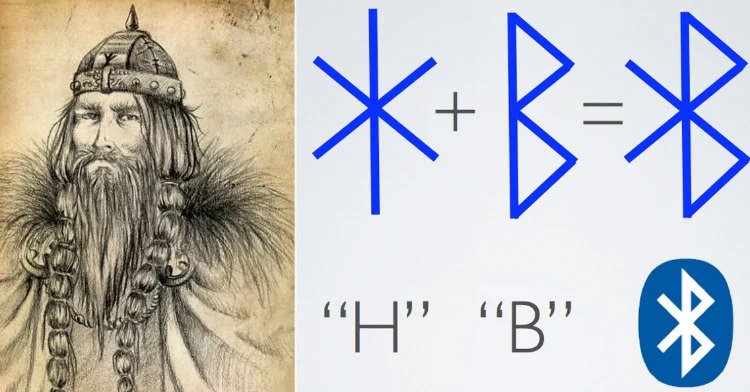
Harald Bluetooth
Harald “Bluetooth” Gormsson was the King of Denmark and Norway. Harald introduced Christianity to Denmark and consolidated his rule over the entire region. The exact year of his birth is unknown; however, it was traditionally thought to have been 910 or 911.
Harald was the son of King Gorm the Old and Queen Thyra.
Regarded as the founder of the Danish monarchy, Harald Bluetooth remains one of the most renowned Danish kings in history. Interestingly, the Danish monarchy remains intact even after an entire millennium.
Harald oversaw the reconstruction of the Jelling runic stones and numerous other public works during his reign. Historians believe that these projects were a way for him to consolidate economic and military control of his country.

Historians suggest that Bluetooth was 74 years old at his death. But where did his peculiar name come from? The king enjoyed blueberries, so much so that his teeth turned blue. And that is how he earned his strange nickname.
Discovery of the Viking Hall
The Vikings inhabited many places from the 9th to the 11th centuries, including mainland Europe, Ireland, England, Scotland, Wales, Greenland, North America, the Faroe Islands, and beyond. As a result, archaeologists tend to find traces of their history even today.
Archaeologists in Denmark discovered the remains of a structure that links to the Viking Age. The structure was probably used as a community hall or for hosting political gatherings between the 9th and 11th centuries.

Thomas Rune Knudsen, the excavation leader and an archaeologist with North Jutland Museums, made a statement about the discovery. The English translation of the statement says: “This is the largest Viking Age find of this nature in more than ten years, and we have not seen anything like it before here in North Jutland.”
Knudsen added: “We only had the opportunity to excavate part of the hall, but there are probably several houses hidden under the mulch to the east. A hall building of this nature rarely stands alone.”
Fortress
The team found the remains near Hune, a village in northern Denmark. According to the experts, the building was approximately 131 feet long and 26 to 32 feet wide; a group of 10 or more oak posts held up the roof.
The hall has an intriguing design similar to Harald’s ring fortresses. These fortresses are located at Furkay near the town of Hobro and Aggersborg near the village of Aggersund.

The archaeologists have only excavated half of the remains of the Viking Hall, although they plan to continue this dig. Furthermore, the archaeologists intend to conduct radiocarbon dating to estimate the hall’s age more accurately.
Harald Bluetooth and.. Bluetooth?
Harald was an exceptional communicator of his time. He was the only king during the middle centuries who was successful in uniting Norway and Denmark. Additionally, Harald marked the end of the worship of Norse Mythology in the region. His rhetoric skills enabled him to influence his entire kingdom.
According to the official Bluetooth website, they named the technology after the Viking King, Harald Bluetooth. Why? Because the King promoted communication between Norway and Denmark.
While working together, Mattinson and Kardach stumbled upon their shared interest in Viking history. Coincidentally, both found it fascinating that Harald was nicknamed “Bluetooth” due to his dead blue teeth. Considering their fondness for this Viking personality, they decided to name the technology ‘Bluetooth’.
Mattinson recalled: “We had a few beers, and since Jim was interested in stories about Vikings, it became the night’s big topic of conversation.”
Bluetooth was finally launched in May 1998, with the first consumer device equipped with the technology hitting the stores by 1999. The name Bluetooth was intended to be temporary. Marketers had planned to change its name to either RadioWire or PAN (Personal Area Network).
However, the team could not complete a full trademark search on RadioWire in time. Similarly, the term PAN entailed some technical issues. Therefore, the name Bluetooth became permanent.